Entering Melih’s studio feels like leaving the world as we know it behind and experience a daydream made out of rich colors, alluring images and memories of a surreal past. Living in the vivid neighborhood of Ortaköy, right next to the Bosporus, Melih’s apartment is a place where your soul finds a rest from the undertow of the city.
Growing up on the Aegaen coast of Turkey and after living in Istanbul for more than twenty years, his work still contains a strong connection to the surrounding of his childhood. Just coming back from a trip to his hometown Aydin, the studio is full of fresh olives, oranges and pomegranates filling the room with a smell of summer.
Having never being trained as an artist Melih is an autodidact in many ways. While his noticed artwork mainly consists of large-scale paintings his studio is full of self-made sculptures, installations and details telling little tales that we were really happy to be able to listen to.
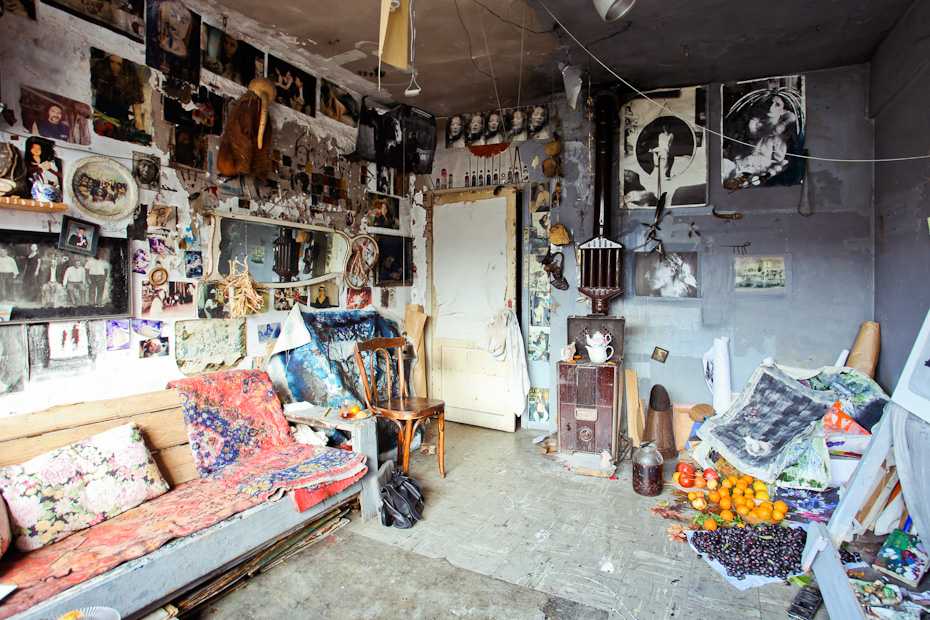
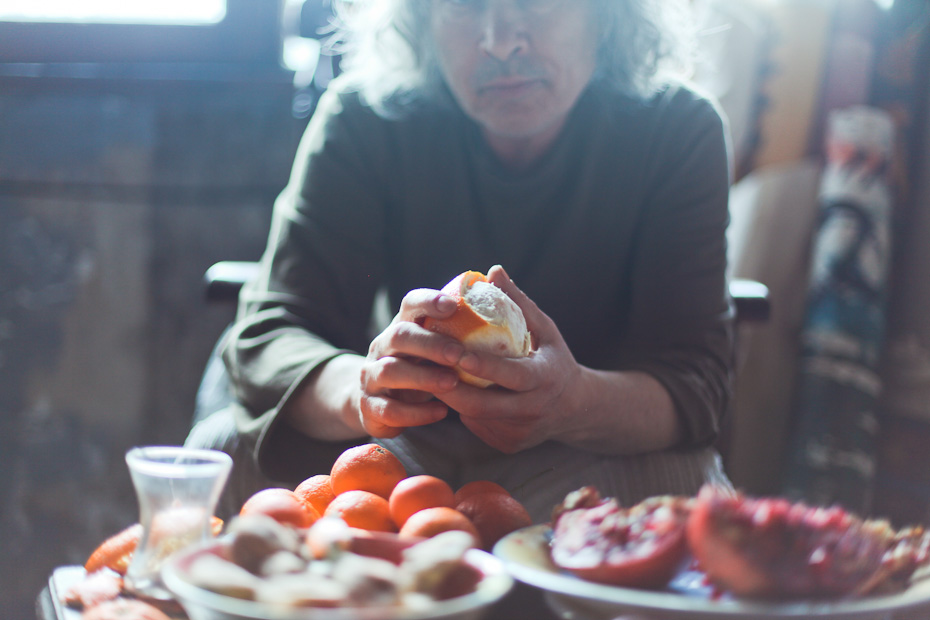
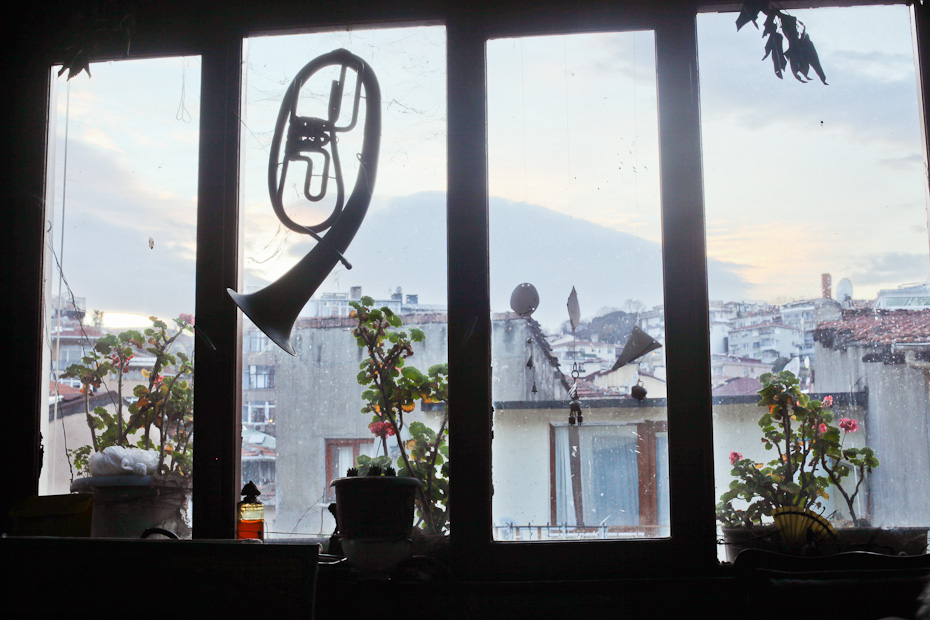
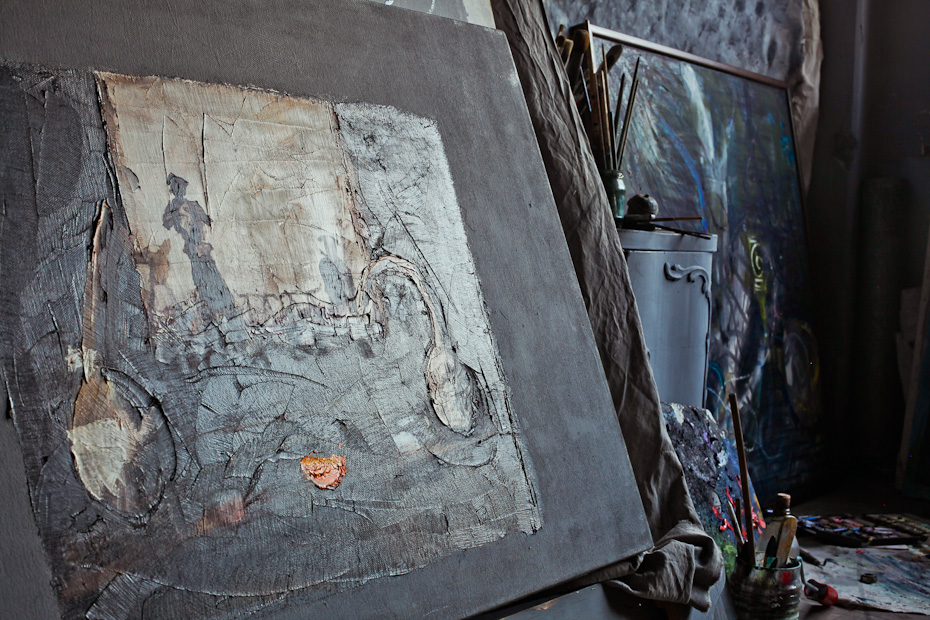
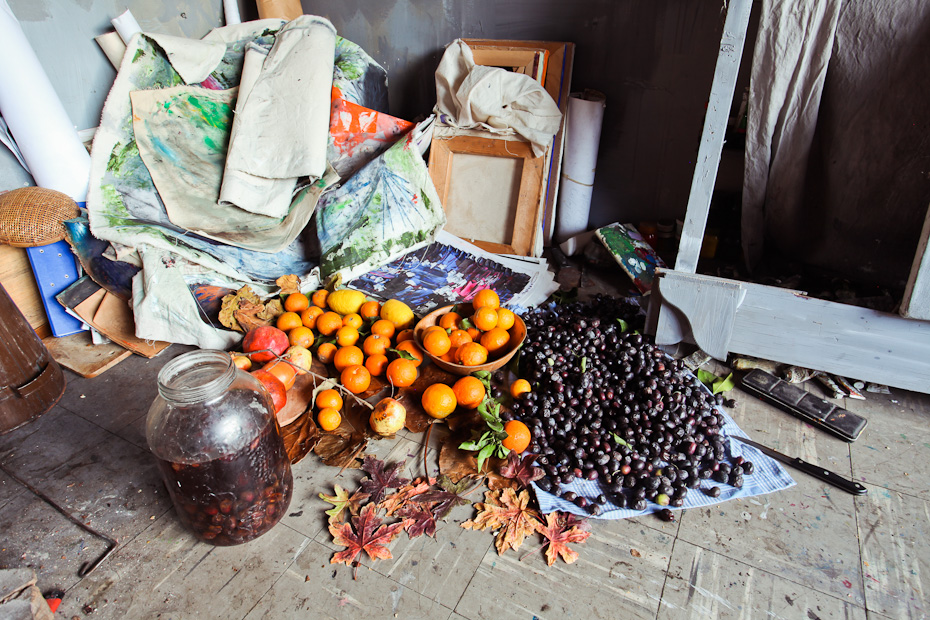
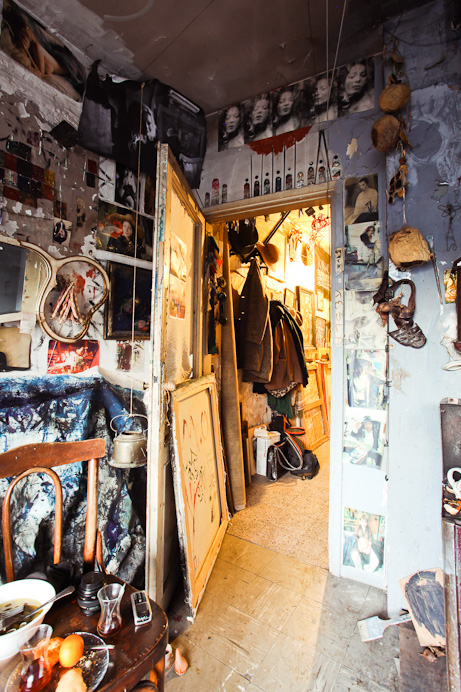
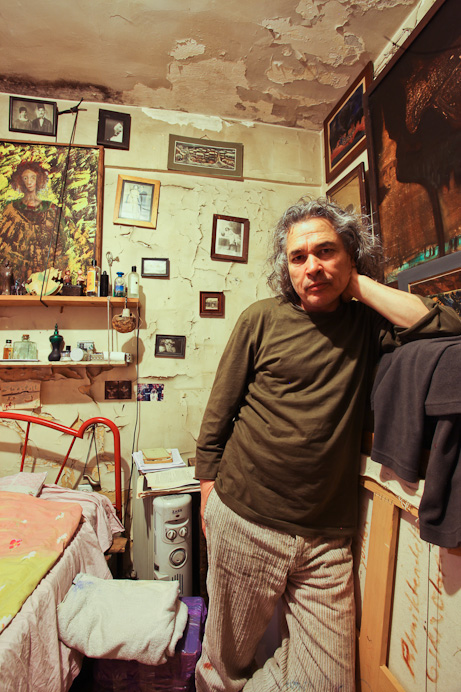
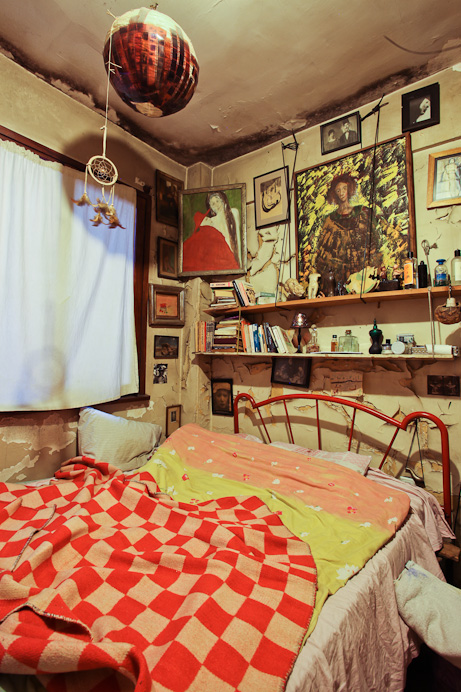
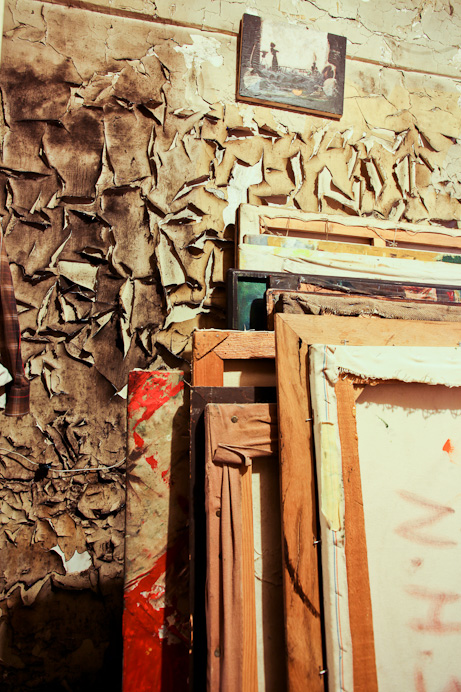
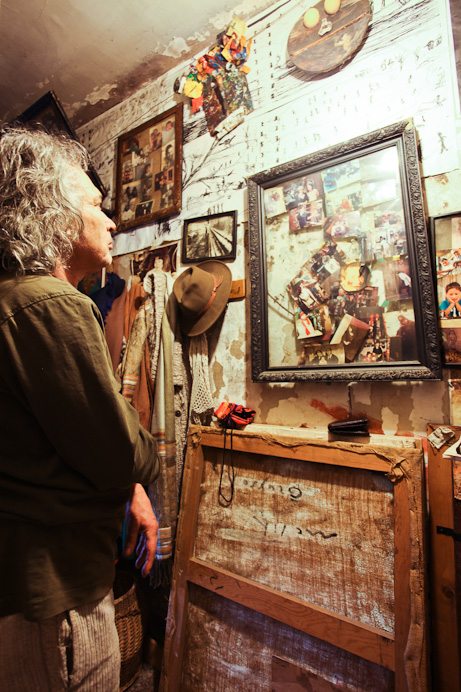
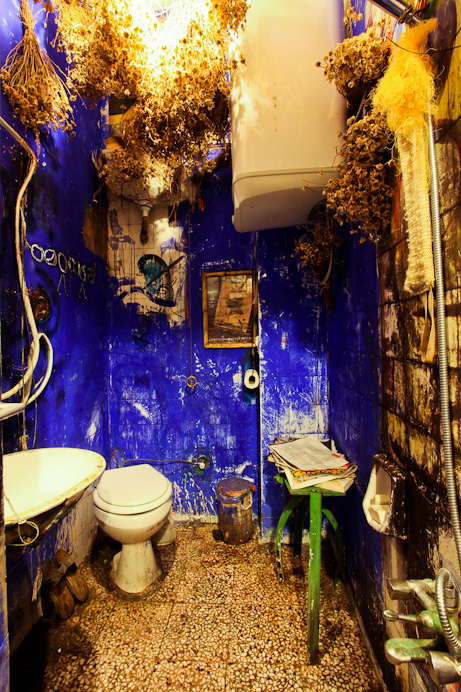
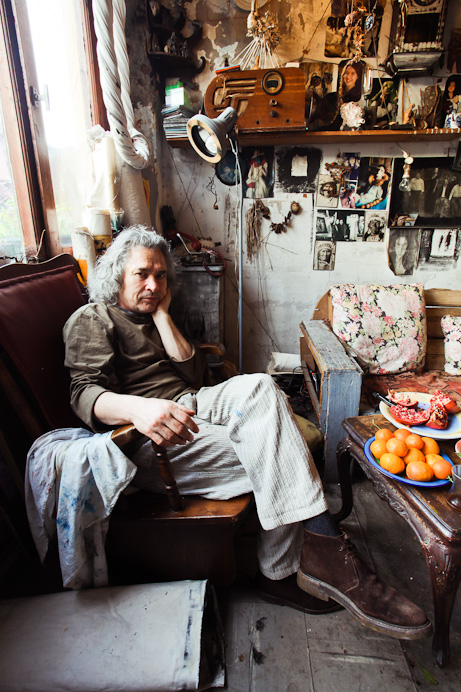
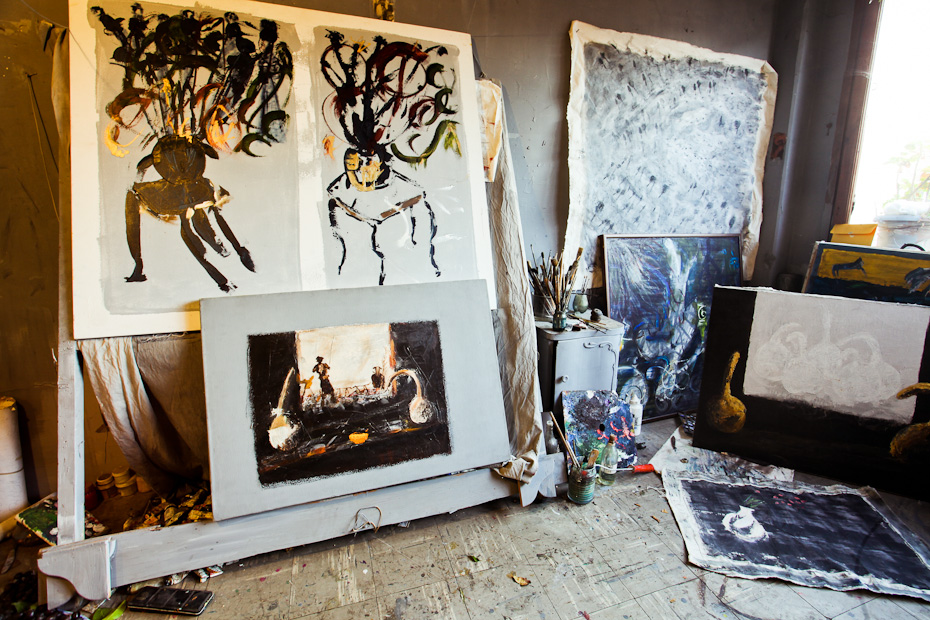
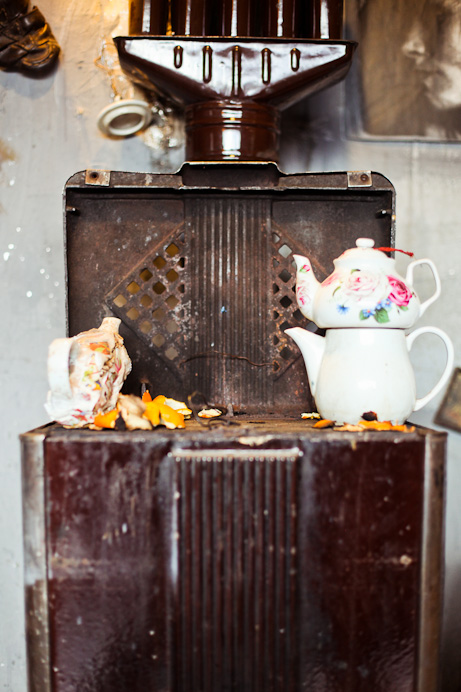
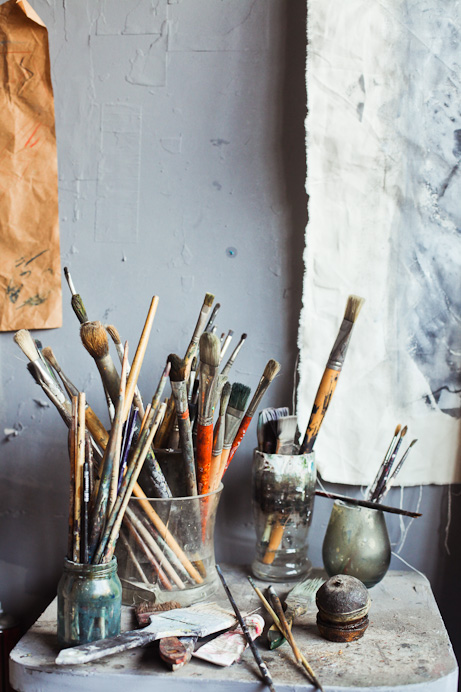
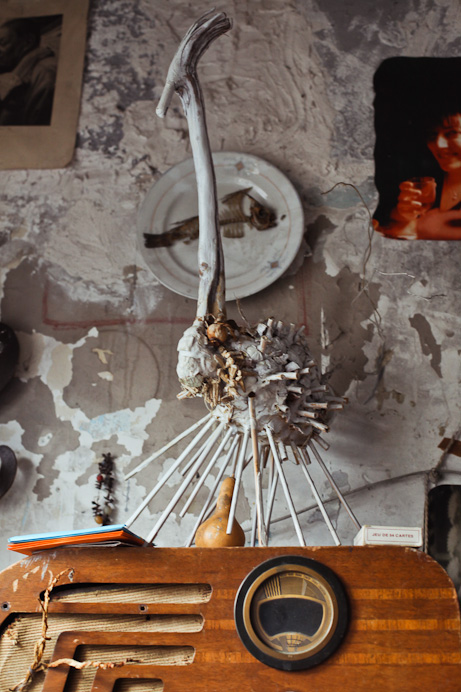
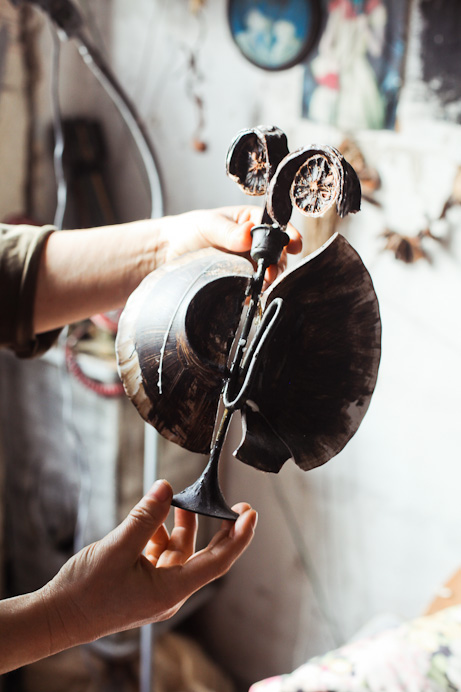
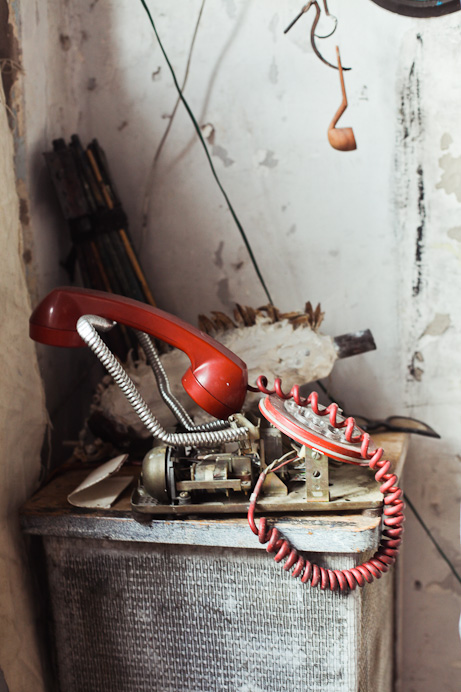
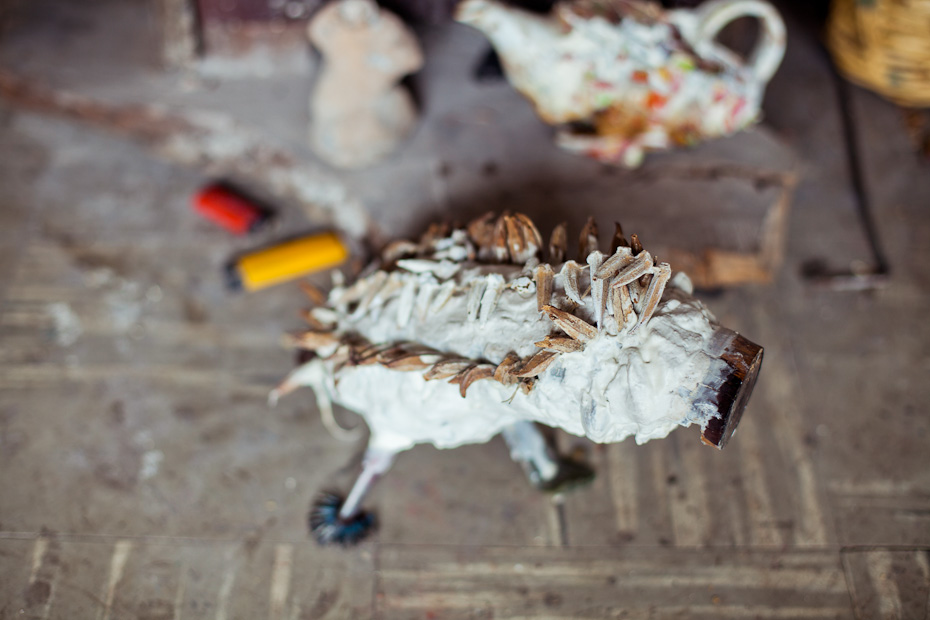
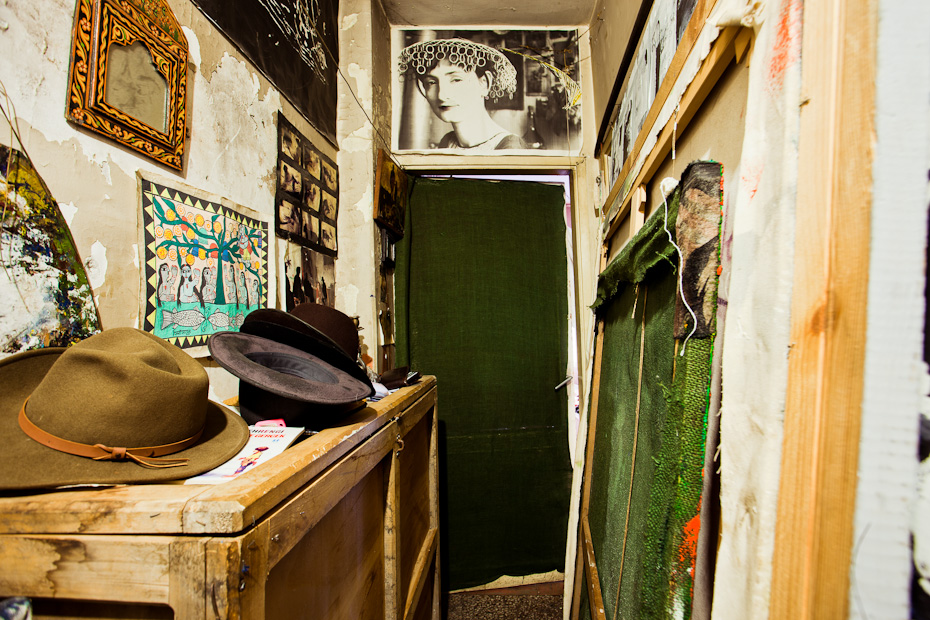
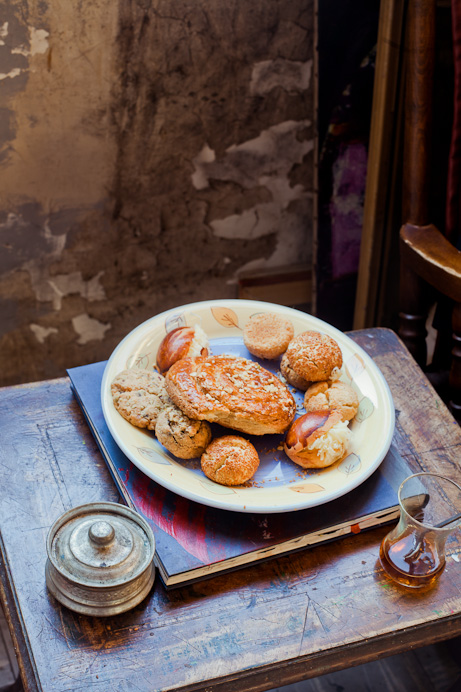
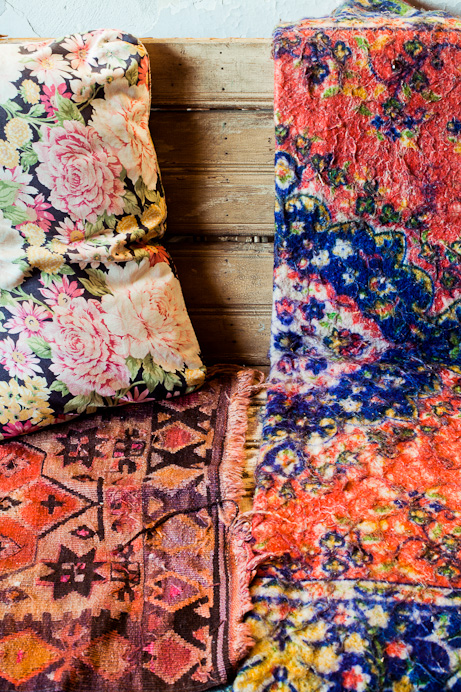
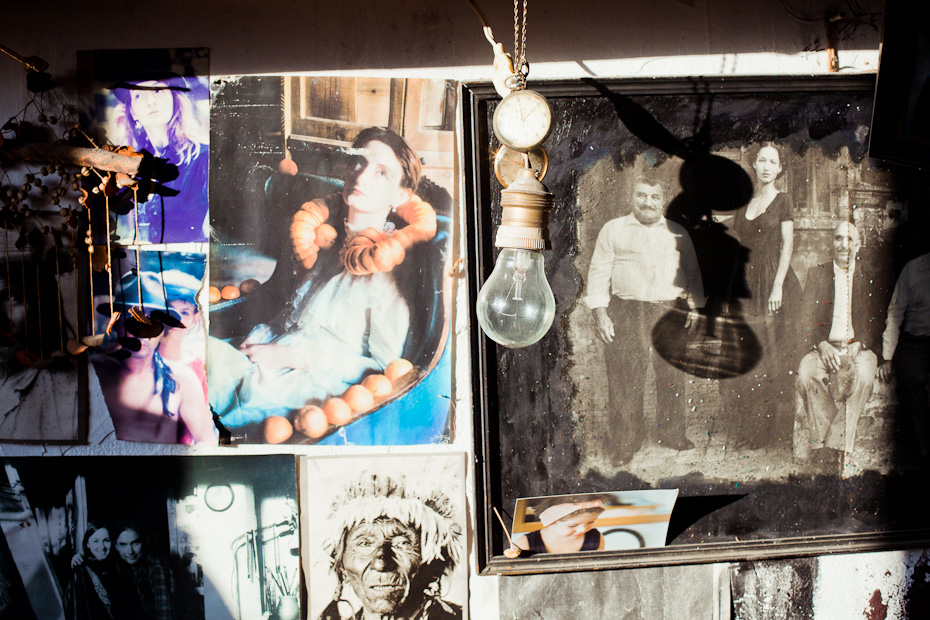
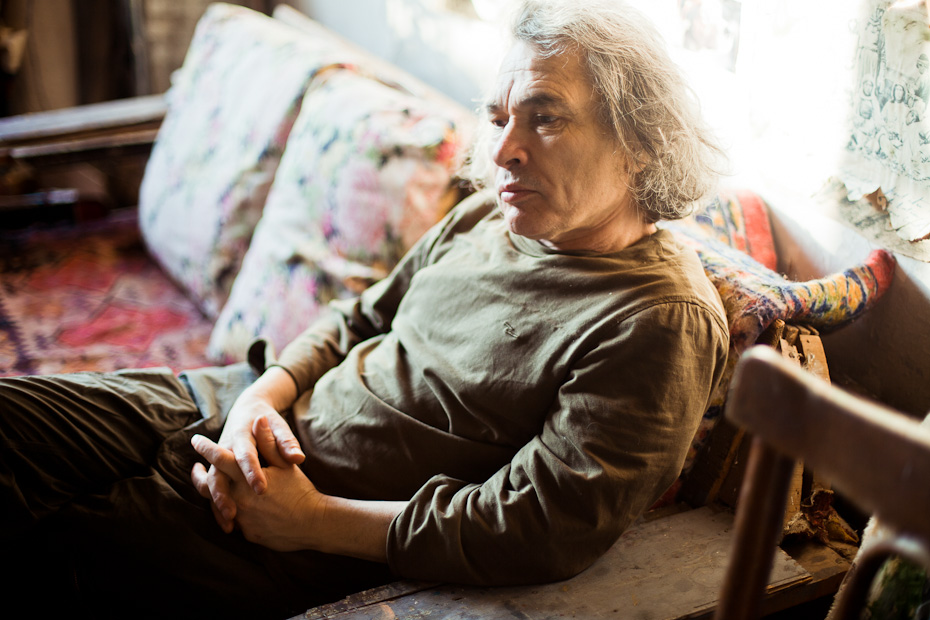
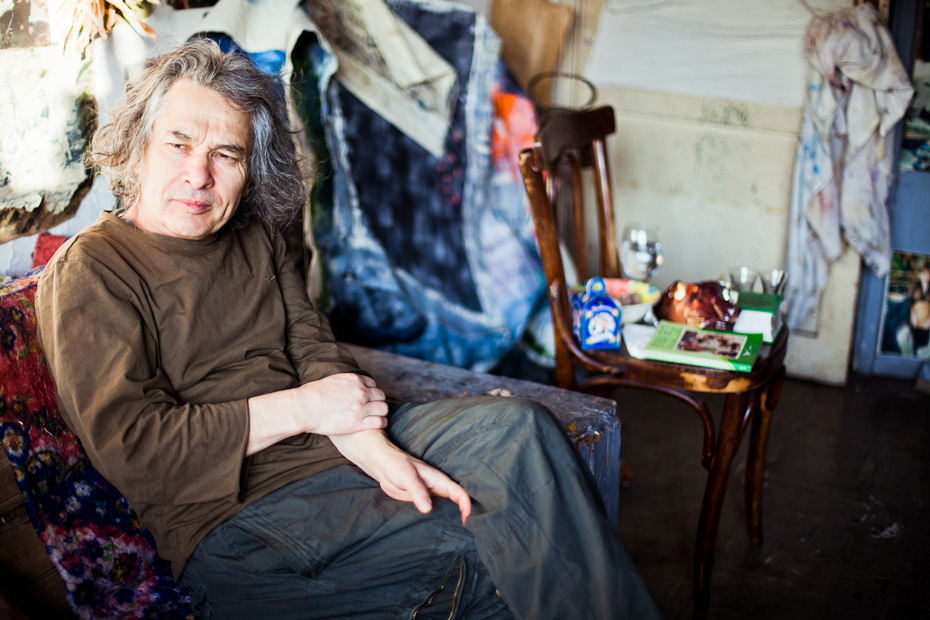
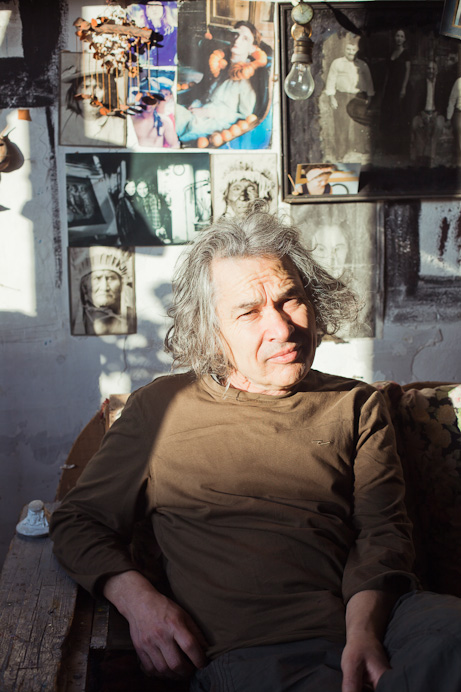
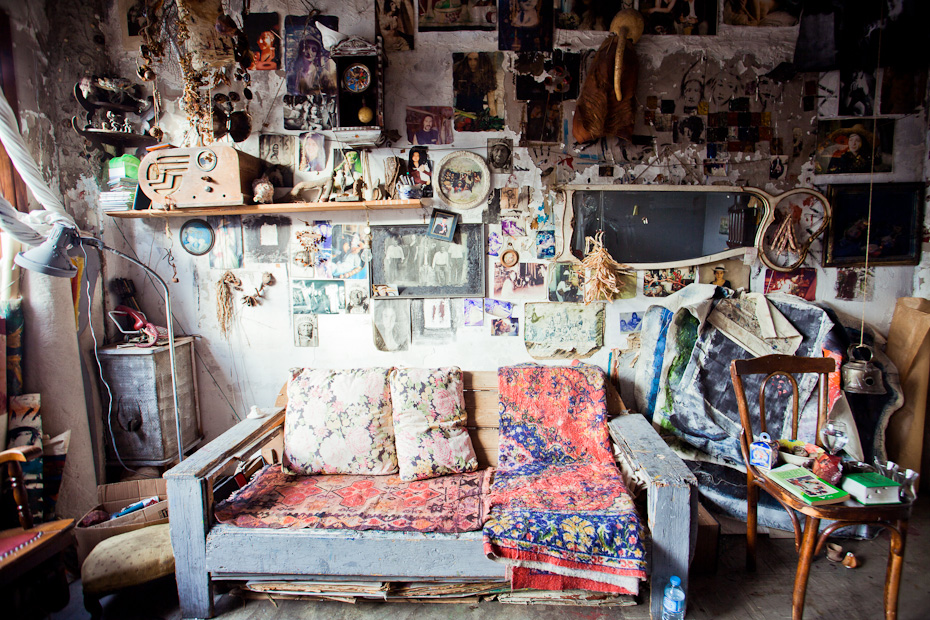
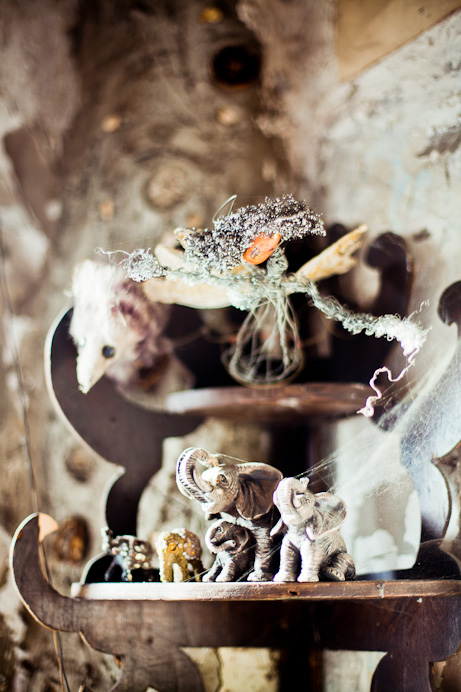
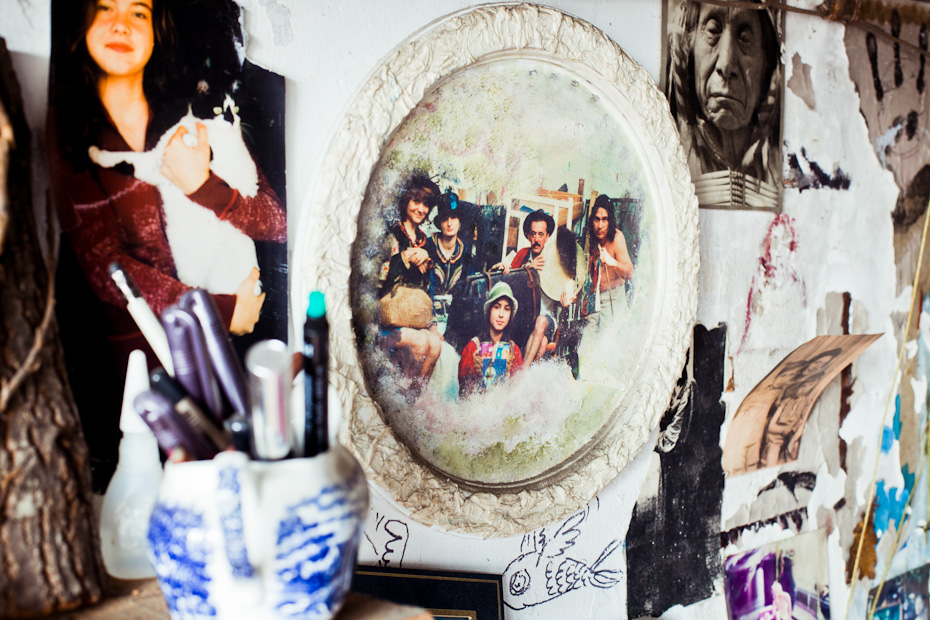
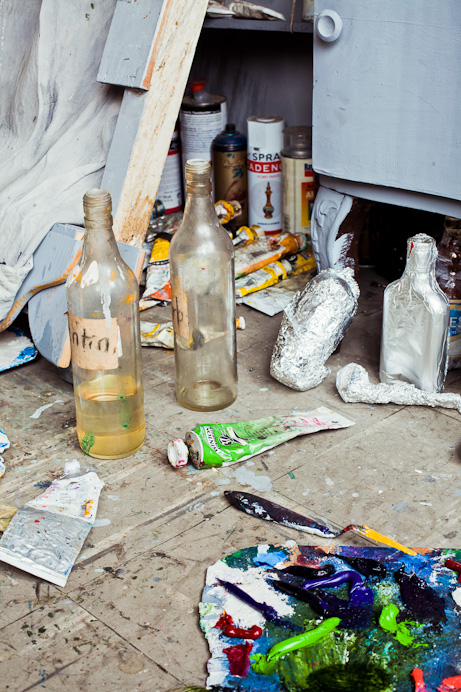
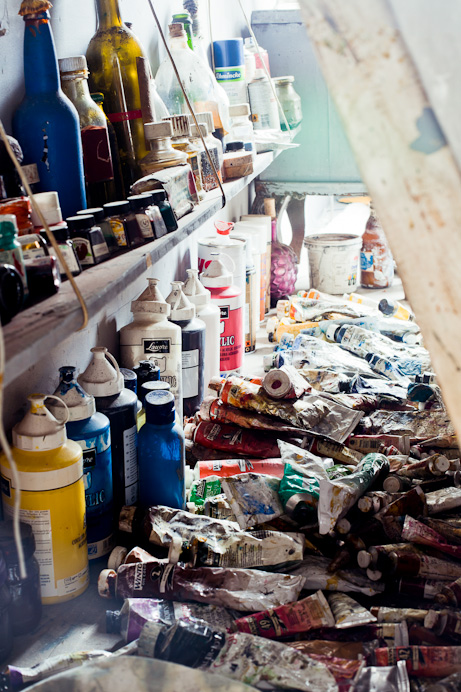
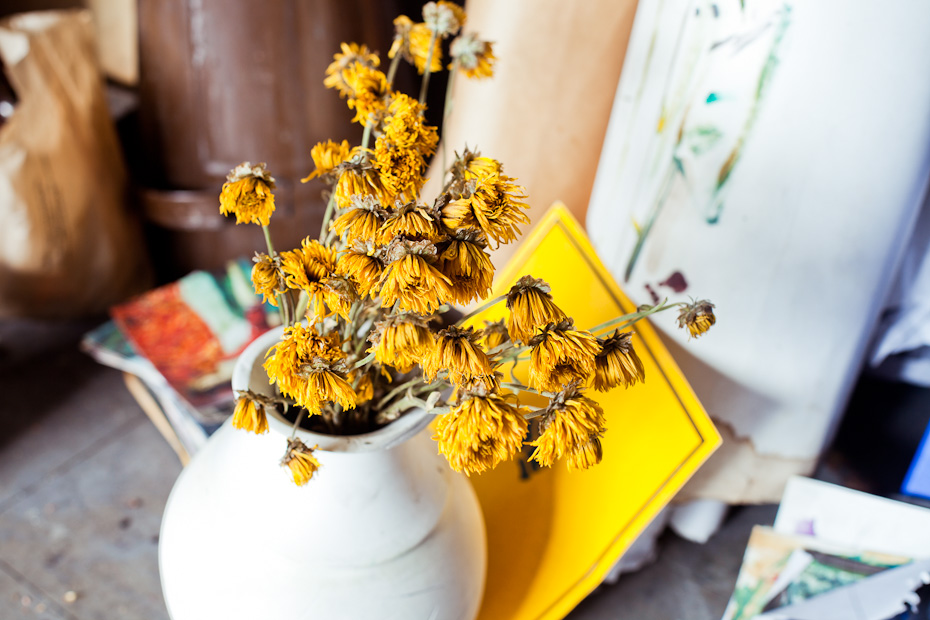
Where did you grow up? What are the images that come to your mind when you think about your childhood?
The year when I was starting elementary school, my father declared bankruptcy and our stuff was confiscated. That was a turning point. My older brother and I had to stay at our grandparent’s house for the summer. There I was introduced to superstitions. The idea of Jinn became very important to me. Even now (showing an object he made) I call this paint Jinn, it fills the empty paint cans.
When did you come to Istanbul and why?
I came to Istanbul in 1986. The reason I stayed here was because I got to meet so many different kinds of people, get caught up with the theaters and cinemas and to meet people who might possibly ask questions that would help me to improve. I found myself in a different world here and never had the time to go somewhere else. I spent my life dreaming.
When did you start painting?
I started around the mid seventies and before that I was writing. I was mainly writing plays. The change from writing to painting was part of a longer process. It was a process of working and thinking.
Did you always know that you have to do something creative?
When I was young I was writing poems. The only thing I did was writing and daydreaming. Sometimes I would daydream before I go to sleep for at least two hours.
Was there a point when you started to consider yourself as a painter?
Around 1978 I realized that I got so many paintings but I wasn’t showing them to anyone. At some point I realized that they were good paintings and thought that I could be a painter. Then i had my first individual exhibition in 1985.
Are the motives and themes you were dealing with in your writing similar to the ones you are now dealing with in you paintings?
Yes, my subject matters were very similar they had the same state of mind if you can say so. Loneliness and nothingness caused by not speaking the same language. I don’t believe in anything, so I needed to find something to hold on to. That’s why both my poetry and painting have human feelings of similar characters.
What are repeating motives in your work? Is there something that is always present?
I am painting these characters and I believe that they exist at some part of the world; Portugal, Chile, India… They are always present but I will never find them and they will never find each other. We only know of the other one’s existence. These are the characters that I have been dreaming about. I think that they might as well be waiting in the next room. They have their own personalities and they drag me away.
Everyone is talking about Istanbul as a city that is always changing and somewhere in-between. What has been the biggest change for you here?
When I first came to Istanbul the migration had already started. People deceived by promises of prosperity were filling up the city. I haven’t experienced the old Istanbul really. I would have loved to be here before all that. To see the old buildings and a more and better preserved city. When I think of stuff like this I always end up thinking that I came here at a bad time. But I think there is going to be a dialectic process, the solidarity of the contrasts will create something new. I would prefer Istanbul to be in it’s post-Byzantine way. With all the minorities, the buildings and the culture. When I first came here the city was like a village. The city became touristic, loud and facing terrible traffic.
Have you always been living here in Ortaköy?
Yes.
Did the “buy out” of Istanbul already start in the 80’s?
These kinds of things started mostly as individual attempts.
Did your art change when you came to Istanbul? Do you feel any differences?
There hasn’t been a lot of change since I moved to Istanbul. I don’t know whether this is good or bad. I am always interested in similar state of minds and situations. And I have been trying to create paintings like I did in Aydin. They don’t seem like they are made by anyone, like they have always existed. I always wanted to paint like this in order to bring the characters that I have formed by words into life. The only thing that has changed – now that I am supposed to earn a living – was my professionalism. I had to stretch the canvas to the frame or buy better quality paints. All these things are hurting my sincerity because I used to paint with tangerine peels even with henna and coffee. That was fine for me but no one buys that. So I had to change. The change started in technical terms and ruined the aura of my work. You can tell that they are made by me. I am trying to go back to that state of purity. I don’t know how successful I will be.
Do you participate in the local art scene?
I had nineteen solo exhibitions in different locations. I have participated in several international group exhibitions. It is not something I turn down. However I don’t care much about art fairs and biennials. In addition to that the galleries here are always working with the same artists, present the same kind of artworks. I got quite bored and feelings like this are not really contributing to it. A few years ago I saw a very good exhibition at Pera Museum. Besides from that I don’t enjoy the art scene here. If there were any good paintings – there must be – you don’t get to see them much often. The galleries operate with a commercial mentality, trying to sell the artist’s same old artworks because there is a demand for it. Since I lack the proper education I had to learn everything through a long journey. It was long but I have learned a lot. There are some things that you just can’t get from school. I wish we could visit each other’s studios, influence each other. We need to get excited, which doesn’t happen anymore.
How do you find the people who buy your paintings? Do you think that they appreciate or understand your journey?
They buy consciously. It is very interesting the buyers of my paintings are always very alike. I don’t know in what sense exactly but when I introduce them to each other they immediately become friends. When I speak to art dealers they always find my work risky, in terms of whether it would sell or not. That’s why it doesn’t work for me in that sense. A friend of a friend of a friend sometimes sees a painting of mine and wants to purchase it. I sell 5-6 paintings a year. Like the spiritual connection I have with my character, the buyers also create a special bond.
Let’s talk about the big wall in this room. Is it changing all the time? Where are the pictures coming from?
After I bought this space I noticed that water was dropping from the nails on the wall. I painted the walls but I knew that the paint would come off. When I realized that I can’t manage the wall I started covering it with photos and things I find. I paint according to my mood, when I get bored I carry my working area to the other side. That’s why the walls are always changing. It happens in an organic way. I thought if could paint on the same canvas and take a picture of it then do the same over and over again the painting would reach to the other side of the wall, wouldn’t that be great painting?
Are the photos of people you know or are they strangers?
Most of them are people I know. Some of my friends asked me why I don’t have their photos on the wall. I don’t put these things in hierarchical order like my mom, my dad, my friend… Some things fall down and I put new things on. It happens on it’s own …
Thank you, Melih, for your time and the fascinating interview!
If you are interested in Melih’s work, take a look at his homepage.
Text: Antonia Märzhäuser
Translation and photography: Ege Okal
